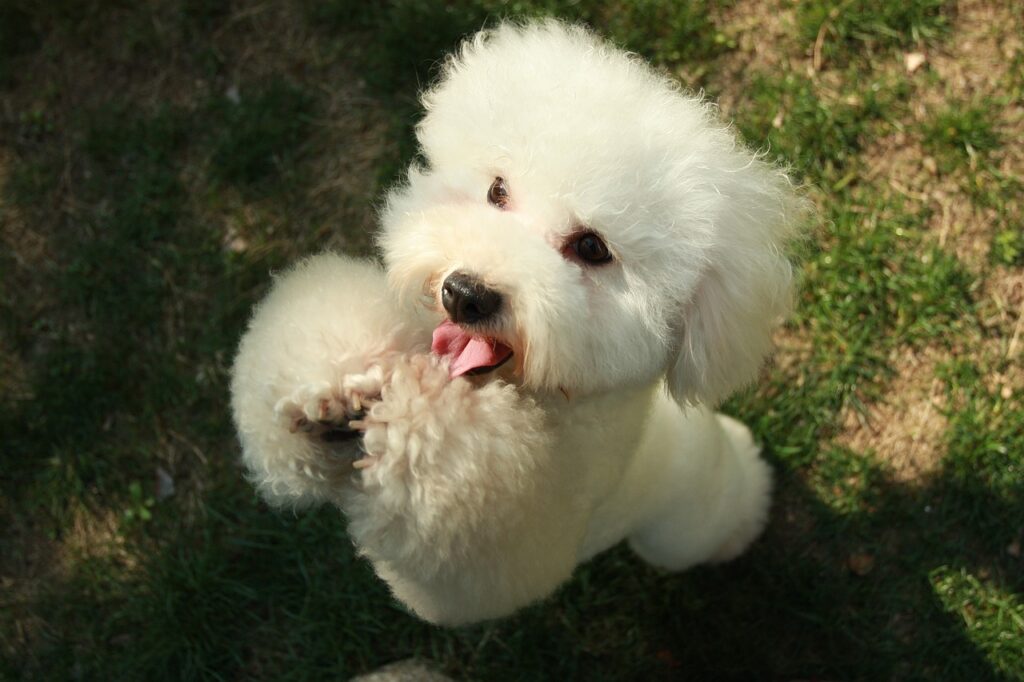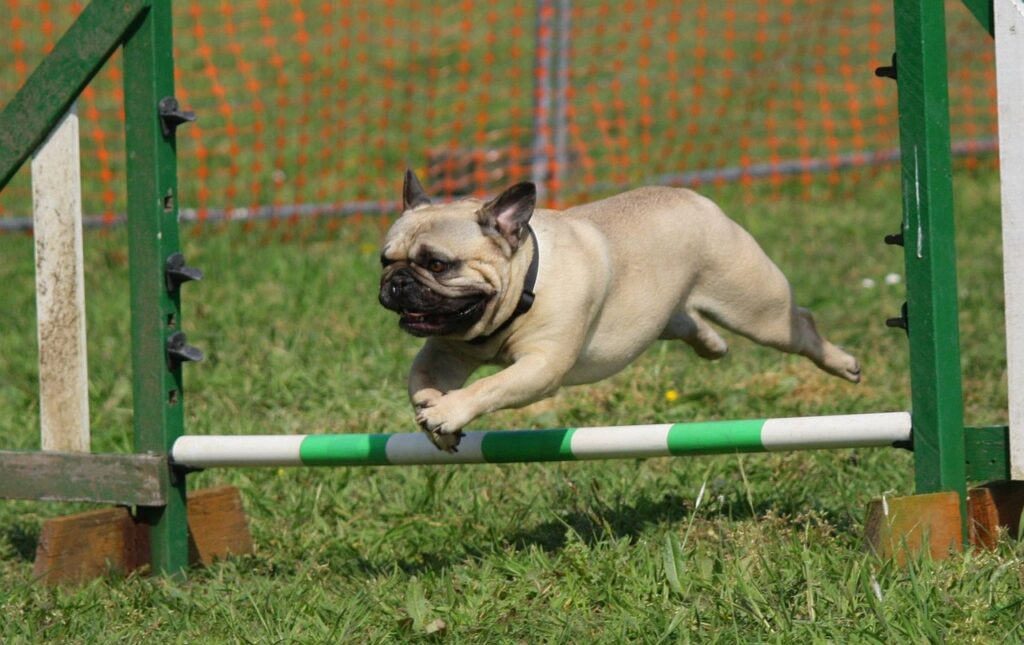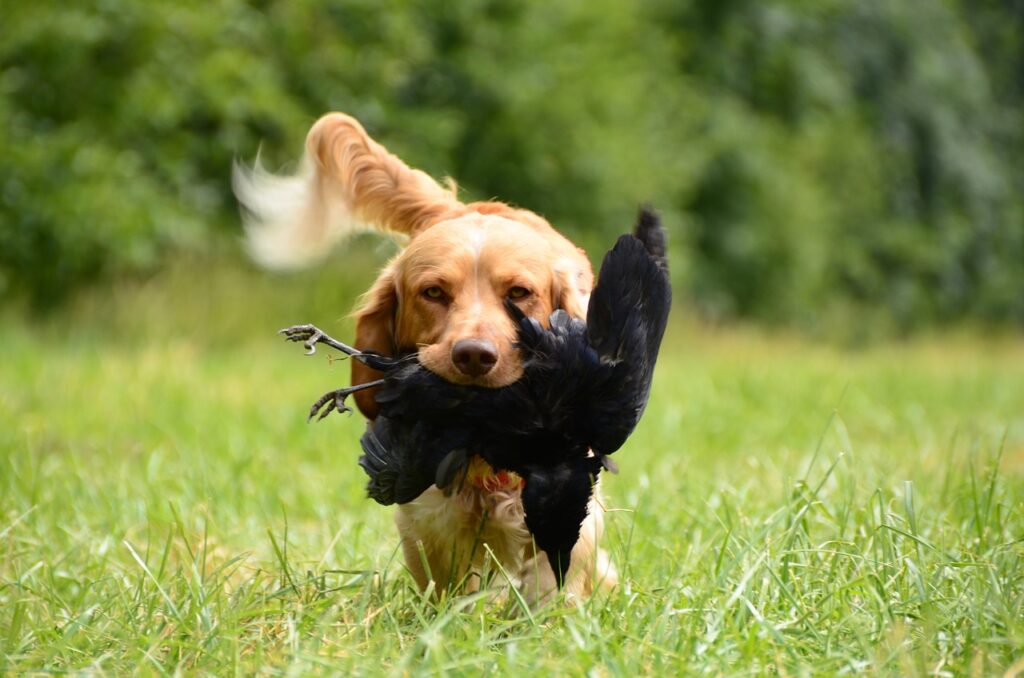
In search of the most effective ways to train your furry companion? Look no further! This article explores the top-notch techniques for teaching your beloved doggo the ropes. From positive reinforcement to clicker training, we’ll delve into a variety of proven methods that will have tails wagging and paws learning in no time. Whether you’re a seasoned dog owner or a first-time pup parent, this article has got you covered. So grab a treat, get comfy, and let’s embark on a journey to discover the best dog training methods out there! When it comes to dog training, there are various methods and techniques available. Each method has its own unique approach and effectiveness in shaping a dog’s behavior. In this article, we will explore and discuss different training methods, focusing on their benefits and how they can positively reinforce your furry friend.
Positive Reinforcement Training Methods
Positive reinforcement training methods are based on rewarding your dog for desired behaviors, rather than punishing or correcting them for unwanted behaviors. These methods focus on encouraging and reinforcing good behavior through various means. Let’s take a look at a few popular positive reinforcement training methods:
Clicker Training
Clicker training is a technique that uses a small handheld device called a clicker to mark the desired behavior at the exact moment it occurs. When your dog performs the desired behavior, you click the clicker and then immediately follow it up with a reward, typically treats or praise. The clicker serves as a clear and consistent signal for your dog, reinforcing the behavior they just performed.
Treat-based Training
Treat-based training is a method that relies on using treats as rewards for your dog’s good behavior. You can use small, bite-sized treats that your dog finds enticing, such as pieces of cooked chicken or dog-friendly treats. When your dog performs the desired behavior, you reward them with a treat. Treat-based training is effective because it associates positive feelings and rewards with specific actions, motivating your dog to repeat those actions.
Marker Training
Marker training is similar to clicker training, but instead of using a clicker, you use a marker word or sound to mark the desired behavior. This can be as simple as saying “yes” or making a distinct sound like a whistle. Whenever your dog does the desired behavior, you immediately mark it with the chosen marker and follow it up with a reward. Marker training allows for precise timing and clear communication with your dog, enhancing the training process.
Leash and Collar Training Methods
Leash and collar training methods involve using specific types of collars and leashes to guide and control your dog’s behavior. While some of these methods have been criticized for being less positive and more corrective in nature, when used correctly and ethically, they can be effective training tools. Here are a few common leash and collar training methods:
Martingale Collar Training
Martingale collar training involves using a special type of collar that tightens slightly when the dog pulls, giving gentle pressure to discourage pulling. This collar is designed to prevent choking or injuring the dog and is often used for dogs that tend to slip out of regular flat collars. Martingale collar training can help teach dogs not to pull on the leash while providing a humane and comfortable training experience.
Head Collar Training
Head collar training uses a specially designed collar that goes around the dog’s head, similar to a horse’s halter. The collar typically has two parts, one that goes around the dog’s neck and one that goes over the dog’s muzzle. When the dog pulls on the leash, the head collar gently turns their head towards you, redirecting their attention and discouraging pulling. Head collars can be useful in teaching dogs to walk politely on a leash.
Prong Collar Training
Prong collar training involves using a collar with metal prongs that exert gentle pressure on the dog’s neck when they pull on the leash. This collar is designed to emulate the pressure exerted by a mother dog on her puppies’ necks during correction. It is important to note that prong collars should only be used under the guidance of a professional trainer, as incorrect use can cause harm or discomfort to the dog. When used correctly and responsibly, prong collars can be an effective training tool for certain dogs.

Electronic Training Methods
Electronic training methods involve the use of devices that provide various signals such as sound, vibration, or mild static stimulation to communicate instructions or reinforce behaviors. These methods are often used for distance training or to address specific behavioral issues. Let’s take a closer look at a few electronic training methods:
Electronic Collar Training
An electronic collar, also known as a remote training collar or shock collar, is a device that allows you to deliver a mild static stimulation or vibration to your dog through a remote control. This collar is used as a form of negative punishment, where the dog experiences a momentary discomfort for undesired behavior. When used correctly and at appropriate levels, electronic collar training can be an effective way to communicate with your dog and address specific problems.
Ultrasonic Training
Ultrasonic training involves using a handheld device that emits a high-frequency sound that is only audible to dogs. This sound is used to redirect or distract your dog’s attention from unwanted behaviors. Ultrasonic training can be useful for reinforcing commands, interrupting undesirable behavior, or gaining your dog’s attention from a distance.
Vibration Training
Vibration training devices provide a gentle vibration as a form of communication or correction to your dog. Similar to electronic collar training, vibration training can be used to reinforce commands or redirecting your dog’s behavior. Vibration training is often used as a milder alternative to static stimulation, providing a non-aversive way to communicate with your dog.
Behavioral Training Methods
Behavioral training methods focus on modifying a dog’s behavior by addressing the underlying emotions or associations that drive that behavior. These methods are especially helpful for dogs with fear, anxiety, or aggression issues. Here are a few behavioral training methods:
Positive Association Training
Positive association training is based on creating positive experiences and associations with specific stimuli or situations that trigger fear or anxiety in your dog. By gradually exposing your dog to these triggers while providing rewards or positive experiences, you help them develop positive associations and reduce their fear or anxiety over time.
Counter Conditioning and Desensitization
Counter conditioning and desensitization involve gradually exposing your dog to their triggers or fears in a controlled and positive way, while simultaneously providing rewards or positive experiences. The goal is to change your dog’s emotional response to these triggers, helping them become more comfortable and less reactive. This method requires patience, consistency, and working at your dog’s individual pace.
Behavior Adjustment Training
Behavior adjustment training, also known as BAT, focuses on rewarding and reinforcing desired behaviors while giving your dog control over their environment. It involves teaching your dog alternative behaviors that are incompatible with their undesirable behavior and allowing them to make choices, empowering them to feel more secure and confident. BAT is particularly effective for dogs with reactivity or fear-based aggression issues.

Reward-based Training Methods
Reward-based training methods aim to motivate and reinforce your dog’s good behavior through rewards they find valuable. These methods utilize different types of rewards to encourage desired behavior. Let’s explore a few reward-based training methods:
Food Rewards
Food rewards, such as treats or small pieces of food, are a common and effective way to motivate and reward your dog. Dogs are naturally food-motivated, and using food rewards allows you to reinforce specific behaviors. It’s important to choose treats that are small, palatable, and easy to consume, so your dog can quickly receive the reward and stay focused on the training session.
Toy Rewards
Toy rewards involve using a favorite toy or interactive play as a reward for your dog’s good behavior. This method is especially suitable for dogs with high play drive. By offering a toy as a reward, you engage your dog’s natural instinct to play and provide them with mental stimulation and physical exercise.
Play Rewards
Play rewards involve incorporating playtime as a reward for your dog’s good behavior. This can include games of tug, fetch, or any other activity your dog enjoys. Play rewards not only reinforce desired behavior but also strengthen the bond between you and your furry friend. By incorporating play into your training sessions, you make them fun and engaging for both of you.
Discipline-based Training Methods
Discipline-based training methods involve using correction or aversive techniques to discourage unwanted behaviors. While these methods can be effective when used correctly and responsibly, it’s important to note that they should always be combined with positive reinforcement to create a balanced and humane training approach. Let’s explore a few discipline-based training methods:
Alpha Dog Training
Alpha dog training is based on the concept of establishing yourself as the pack leader or “alpha” and using dominance-based techniques to control your dog’s behavior. This method involves techniques such as alpha rolls, leash corrections, or physical manipulation to establish dominance and control. However, research has shown that dominance-based training can lead to anxiety and aggression in dogs. It is important to approach alpha dog training with caution and seek guidance from a professional trainer if using this method.
Negative Reinforcement
Negative reinforcement involves the removal of an aversive stimulus to reward or encourage the desired behavior. For example, applying pressure on a leash to make a dog sit and releasing the pressure when they comply. Negative reinforcement focuses on teaching a dog to avoid or escape discomfort and can be effective when used correctly. However, it is crucial to ensure that the aversive stimulus is applied in a humane and controlled manner, and that positive reinforcement is incorporated to create a balanced training approach.
Punishment-based Training
Punishment-based training methods rely on using aversive techniques, such as scolding or physical corrections, to discourage unwanted behaviors. These methods aim to associate the behavior with a negative consequence, making the dog less likely to repeat it. While punishment can be effective in suppressing a behavior, it does not address the underlying cause and can lead to fear, anxiety, or aggression. Punishment-based training should be approached cautiously and used as a last resort, always in combination with positive reinforcement and under the guidance of a professional trainer.

Science-based Training Methods
Science-based training methods are rooted in behavior science and rely on understanding how dogs learn and respond to their environment. These methods incorporate principles of psychology and learning theory to shape and modify behavior. Let’s explore a few science-based training methods:
Cognitive Training
Cognitive training focuses on stimulating your dog’s mental abilities and teaching them to think and problem-solve. This method involves engaging your dog in interactive games or puzzles that require them to use their brain to find solutions. Cognitive training helps keep your dog mentally sharp, promotes bonding, and provides a constructive outlet for their energy.
Operant Conditioning
Operant conditioning is a learning process that involves associating behaviors with consequences. This method uses positive reinforcement, negative reinforcement, positive punishment, or negative punishment to shape and modify behavior. It focuses on rewarding desired behaviors and ignoring or redirecting unwanted behaviors. Operant conditioning provides a clear framework for training and can be used to teach various commands or behaviors.
Classical Conditioning
Classical conditioning involves associating a neutral stimulus with a primary stimulus to create a conditioned response. This method relies on creating positive associations with specific cues or situations to modify behavior. For example, pairing the sound of a clicker with a treat to create an automatic positive response to the clicker. Classical conditioning is often used in combination with other training methods to create positive associations and reduce fear or anxiety.
Balance Training Methods
Balance training methods aim to combine different approaches and techniques to create a well-rounded training approach that suits the individual needs of each dog. These methods recognize the importance of both positive reinforcement and correction in shaping a dog’s behavior. Let’s explore a few balance training methods:
Balanced Approach
A balanced approach to training involves utilizing a combination of positive reinforcement and correction techniques to create a balanced training experience. This approach acknowledges that while positive reinforcement is essential for motivating and rewarding desired behavior, there may be occasions where correction techniques are necessary to address unwanted behavior effectively. It emphasizes the importance of fair and consistent training methods.
Combination of Positive and Discipline-based Methods
Combining positive reinforcement techniques with discipline-based methods can create a balanced training approach. This combination allows for the use of corrective techniques when needed, while still prioritizing positive reinforcement to motivate and reward good behavior. It is essential to find the right balance between rewards and corrections, tailoring the training approach to the specific needs of your dog.
Adaptation to Individual Dogs
Balance training methods recognize that every dog is unique and may respond differently to various training techniques. These methods emphasize the importance of adapting the training approach to suit the individual dog’s temperament, learning style, and specific needs. By understanding and respecting your dog’s individuality, you can create a customized training plan that is effective and enjoyable for both of you.
Force-free Training Methods
Force-free training methods prioritize the well-being and emotional state of the dog above all else. These methods rely solely on positive reinforcement and avoid any form of punishment or aversive techniques. Force-free training is based on building a strong bond of trust between you and your dog, promoting cooperation and willingness to learn. Let’s explore a few force-free training methods:
No-Force Training Techniques
No-force training techniques focus on utilizing positive reinforcement and rewards to motivate and shape your dog’s behavior. These techniques avoid any use of force, intimidation, or aversive methods. Instead, they rely on clear communication, patience, and understanding to achieve desired results. No-force training techniques prioritize the emotional well-being of the dog and aim to create a positive and enjoyable training experience.
Positive-only Training
Positive-only training methods rely exclusively on positive reinforcement to motivate and reward desired behavior. These methods involve ignoring or redirecting unwanted behavior rather than using any form of punishment or correction. Positive-only training is particularly effective for dogs with sensitive temperaments or those who may be fearful or anxious. It promotes a trusting and understanding relationship between you and your dog, built on mutual respect and cooperation.
Motivational Training
Motivational training methods focus on finding what motivates your dog the most and using those motivators as rewards for desired behavior. This can include using high-value treats, praise, toys, or play to keep your dog engaged and eager to learn. Motivational training aims to create a fun and stimulating training experience for your dog, making them an active participant in the learning process.
Conclusion
In conclusion, there are various dog training methods available, each with its own unique approach and effectiveness. Positive reinforcement training methods, such as clicker training, treat-based training, and marker training, focus on rewarding good behavior to motivate and shape your dog’s actions. Leash and collar training methods, including martingale collar training, head collar training, and prong collar training, involve using specific collars and leashes to guide and control behavior. Electronic training methods, such as electronic collar training, ultrasonic training, and vibration training, utilize devices to communicate instructions or reinforce behavior. Behavioral training methods, such as positive association training, counter conditioning and desensitization, and behavior adjustment training, aim to modify behavior by addressing underlying emotions or associations. Reward-based training methods, such as food rewards, toy rewards, and play rewards, use rewards that your dog finds valuable to motivate and reinforce positive behavior. Discipline-based training methods, such as alpha dog training, negative reinforcement, and punishment-based training, involve correction or aversive techniques to discourage unwanted behavior. Science-based training methods, such as cognitive training, operant conditioning, and classical conditioning, use behavior science principles to shape and modify behavior. Balance training methods combine different approaches to create a well-rounded training approach that is customized to the individual needs of each dog. Force-free training methods prioritize positive reinforcement and avoid any form of punishment or aversive techniques for a positive and enjoyable training experience. By understanding the various training methods and tailoring them to your dog’s specific needs, you can successfully train and shape your furry friend’s behavior in a positive and humane way.

